Discover Guangfulin
https://pano.gflpark.com/pano/?module=pano
Cultural relics record the civilization and progress of mankind and witness the rise of cities. Either ruins or treasures buried under water or soil are the spiritual wealth of a city, even in the future.
Guangfulin is the root of Shanghai's history and culture. Efforts to safeguard, study and display this area are of great significance in Shanghai's drive to enhance its cultural confidence and brand its cultural image.
After ten years of hard work of countless archaeologists, designers and builders, this mysterious cultural site has finally opened his heavy door to the world. Let us discover this treasured land and the cradle of our civilization, and pay tribute to our ancestors.
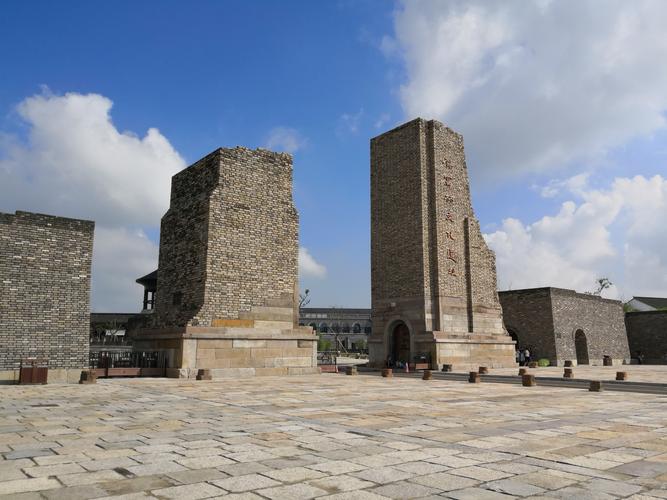
I. Archaeological discovery and excavation
In 1959, Shanghai Cultural Relics Commitee learned that villagers in Guangfulin discovered a number of ancient pottery pieces when they dredged a river. After field investigation, they identified this area as a key ancient cultural site. In 1961, Shanghai Cultural Relics Committee unearthed two ancient tombs in Guangfulin and excavated a lot of relics of the Liangzhu Culture. That was the first discovery of the Liangzhu Culture in Shanghai. In 1977, Guangfulin Site was listed as a cultural heritage site in Shanghai. In 1984, Shanghai Municipal Government put up a monument with the inscription “Guangfulin Ancient Cultural Site”, identifying it as a heritage site. From 1999 to 2005, Shanghai Museum once again investigated and excavated the site and discovered cultural relics of the Neolithic Age, Zhou Dynasty and Han Dynasty. The excavation project discovered and confirmed a new archaeological culture in the Lower Yangtze River Delta: Guangfulin Culture. This outcome fills the gap in the study of the history and cultural development of the region. At first, for the sake of academic prudence, the findings were provisionally named "Guangfulin Relics." The name Guangfulin Culture was confirmed at the Lake Taihu Archaeological Symposium in 2006. From 2008 to 2015, after excavation of more than 60,000 square meters, the importance of Guangfulin culture in the study of early civilization in Shanghai and even China showed up more and more clearly. It became an important subject of academic studies. In 2013, Guangfulin Site was put by the State Council in the seventh batch of national cultural relics to be safeguarded. Guangfulin was present in the preliminary list of top ten archaeological excavation projects of China several times. In 2016, it won the Field Archaeology Award from the Chinese Archaeological Society. This is not only a recognition of Guangfulin Site's field archaeological outcome, but also an affirmation of its commitment to safeguarding heritage.
II. Exhibition tour and introduction
1. Core Area of Heritage Conservation (North of the Bone Needle Square)
The Core Area of Heritage Conservation is located to the north of the Bone Needle Square and occupies an area of around 100,000 square meters. According to archaeological findings, the ancient site was mainly hidden in this area, where abundant ancient relics along with unsolved mysteries are buried. It was listed as a core protection area, which can’t be excavated without approval by the China Cultural Heritage Conservation Committee. In the meantime, it is also the most valuable and mysterious area that a tourist should not miss in Guangfulin Heritage Park.
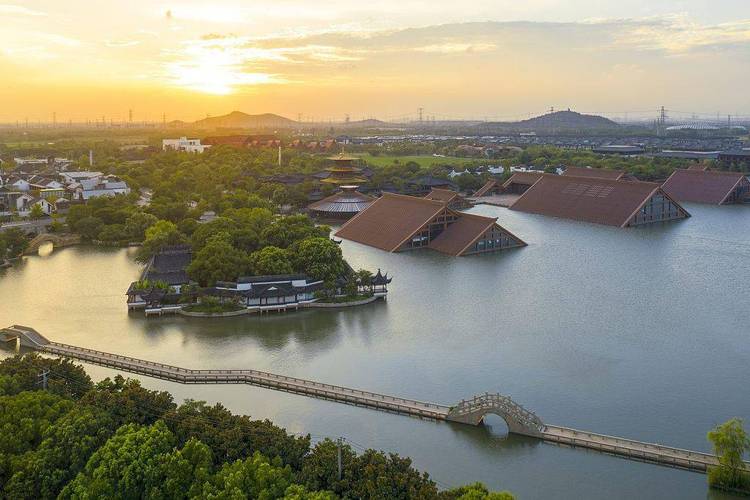
2. Guangfulin Archaeology Museum
There are several semi-buried pottery-like architectures in the Core Area of Heritage Conservation. They are halls of the Guangfulin Archaeology Museum, one of the landmark museums of Guangfulin. The museum has a huge collection of exquisite cultural relics unearthed from Guangfulin and previously kept by Shanghai Museum. Apart from exhibiting relics unearthed from the Guangfulin site, the museum was also a venue of exchanges among museums of the world. The museum was specially equipped with a restoration room which is connected with the stylish exhibition space in the north, which helps extend the exhibition space outdoors and greatly enhances the total visual attraction.
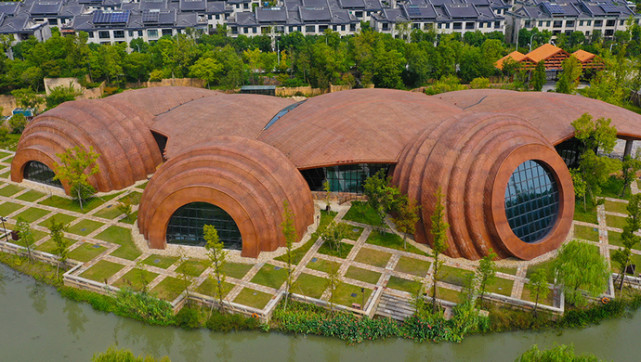
3. Guangfulin Culture Museum
Guangfulin Culture Museum is located in the first big roof and the nearby rotunda floating above Lake Fulin, while the entire exhibition space is built under the lake. Visitors will get the feeling of stepping into the ground and traveling back into the past. The museum is designed to offer a “journey through time and space” by creating scenarios presenting the archeological history of Guangfulin, the land formation and history of Shanghai, the arrival and gathering of ancestors, the formation of towns, the golden age of Songjiang county, the rise of Shanghai as a modern city and its future. Visitors will experience and learn about the origin and prospects of Shanghai through travel through time.
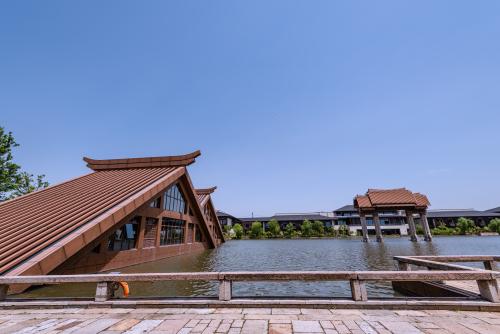
4. Bone Needle Square
After entering the Twin Watchtowers at the end of the central axis, you’ll find the Bone Needle Square, the iconic square of Guangfulin Heritage Park. At the center of the square stands a bone needle symbolizing the primitive tool used by our ancestors in knitting clothes, blankets and fish nets. It is the most abundant representative relics unearthed in the Guangfulin site. The landmark indicates the profound history of Guangfulin Heritage Park, but also symbolizes the wisdom and diligence of ancient Guangfulin residents. In the meantime, it also serves as a reminder to visitors that they’ve arrived at Guangfulin Heritage Park’s core protection area.
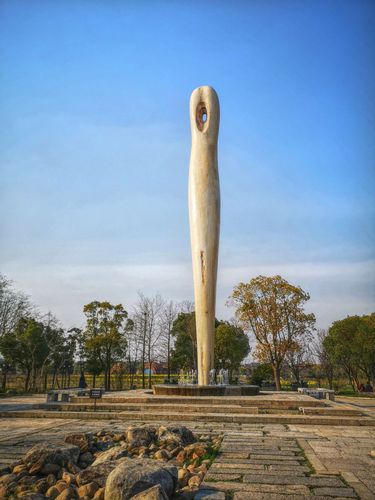
There are also 56 other attractions in Guangfulin Park, such as Pottery Museum, Chen Zilong Memorial, Songjiang Fine Arts Gallery, Kiln Museum, Wood Art Gallery, Hall of National Music Instruments, Duoyun Academy, which will showcase the breathtaking Songjiang culture to tourists.